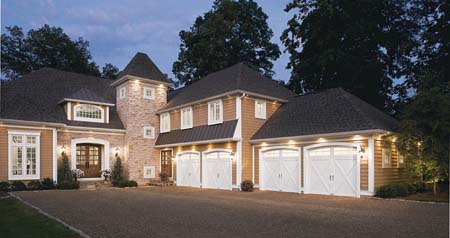How to Prepare Your Garage for Winter
How to Prepare Your Garage for Winter
As the coldest days of the year approaches, many homeowners are wondering how to keep cold air out of a garage, as well as how to prepare a garage for winter in general.

During winter, you’re dealing with frigid temperatures and the high cost of heating. Adjustments, tweaks, and improvements to your garage can make a huge difference in dealing with these things. To help you get started, here’s a look at how to winterize a garage door and the inside of the garage:
Insulation: Adding insulation to both your garage door and your garage walls is the best way to prepare for winter. There are two ways to go about insulating a garage door. First, you can replace your existing garage door with a more efficient insulated model. Or you can see if your existing door can be retrofitted for insulation. Either way, adding insulation is a great way to prevent the cold from affecting things in your garage and to prevent your indoor heating from having to work overtime.
Space Heater: A small gas or electric heating unit can help keep your garage nice and warm through the harshest winter months, and it can also help protect any assets you store in your garage from cold-related damage. There’s also something incredibly nice about getting into your car without needing a parka and gloves.
Organization: If you’ve buried your snowblower or shovel, or if the ice melt is in a shed behind your house, move them into accessible spots in your garage so you don’t have to go searching for them when they’re needed.
Weatherstripping: Weather stripping helps create a barrier between your garage and the great outdoors. But over time, weatherstripping can begin to wear and fall apart. When it’s cracked and brittle, it’s no longer doing its job — and it’s time to fix it. If you’re replacing weatherstripping, begin by completely removing the existing stripping and its sealant. Then, align the new product by closing the door and making sure the rubber’s flap creates a strong new seal.
How Weather Affects Garage Doors
Homeowners often don’t think about how valuable their garage doors are. From helping to keep your home more secure to save you from running out in the snow or rain to get into your car. Additionally, your garage door works hard every day as most homeowners open and close their door multiple times a day, putting wear and tear on it over time.
But, what other factors affect your garage door? Like other elements of your home’s exterior, your garage door sees effects from the weather throughout the year.
Extreme temperature changes, especially from cold weather, affect garage doors. When the temperature drops, the different components of your garage door’s mechanisms are affected — such as the springs. They are more likely to break during the wintertime than they are during the summer. This is because cold temperatures make metal contract. Applying lubricant to all metal parts of your garage door system is a great way to prevent metal from contracting.
Cold weather also brings snow and ice in many areas. If water pools in the gutters around your garage door and other areas, that water will freeze and potentially damage the door.
Precipitation from rain, snow, and ice all affect your garage door. If you have a wooden garage door or if any of the exterior framework is made of wood, any moisture will cause the wood to expand. During that process, the expanding wood can put stress on other parts of the mechanism and lead to breaks.
When you’re wondering how to keep cold air out of a garage, get in touch with the experts at Ole and Lena’s. In addition to our wide range of garage door installation, repair, and maintenance services, we can also help you with questions about insulated garage doors and the difference it can make for your garage.








